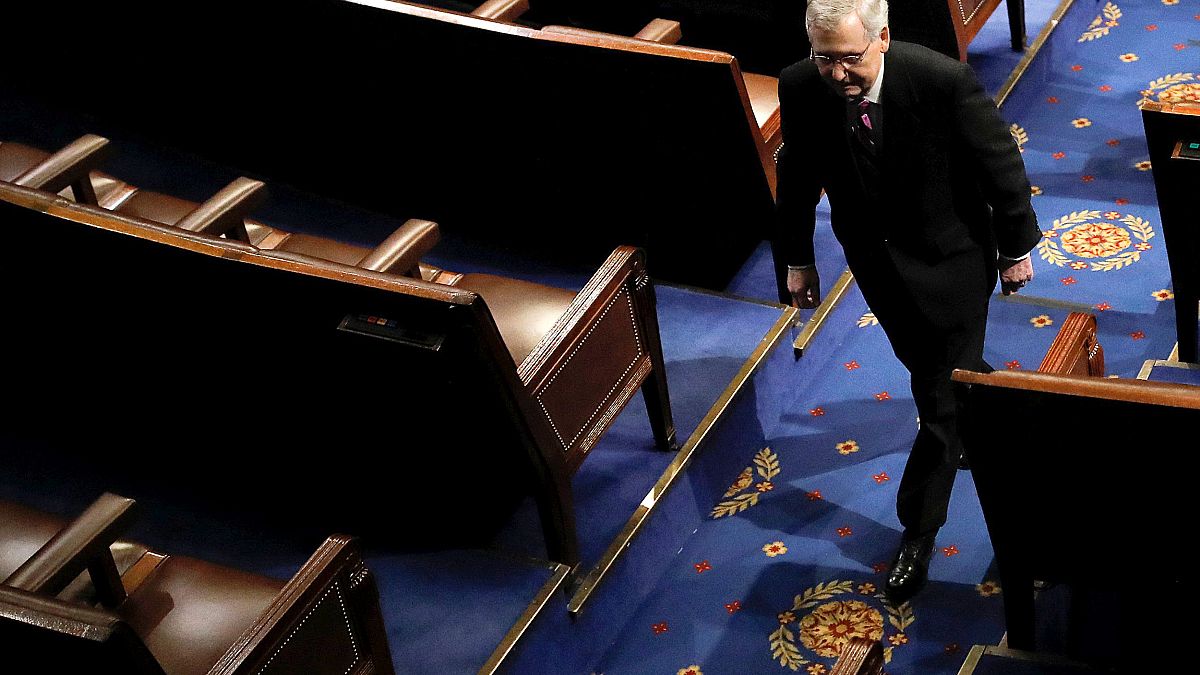The Senate majority leader is using the procedural move to make it so that non-Cabinet-level executive branch and district court nominations need only two hours of floor debate.
For the second time in Donald Trump's presidency, Senate Majority Leader Mitch McConnell, R-Ky., has triggered what is known as the "nuclear option."
On Wednesday, McConnell went "nuclear," which means he used Senate procedural tactics to bypass a 60-vote threshold required to overcome opposition to slashing the debate time for lower-level executive branch nominations, enabling him to do so with just a simple 51-vote majority. Later Wednesday, McConnell is using the same move to change the rule and shorten debate time for district court nominations.
McConnell is pulling the lever on the nuclear option to make it so that non-Cabinet-level executive and district court nominations need only two hours of floor debate rather than the existing 30 hours of debate before a final confirmation vote is held.
Republicans tried to pass a resolution requiring as much on Tuesday, but the measure got just 51 of the 60 votes required for adoption.
With debate limited, it will be significantly easier for McConnell to get some of Trump's nominees confirmed. McConnell previously went nuclear on the confirmation of Supreme Court nominations, which had required 60 votes, in order to place Neil Gorsuch and, later, Brett Kavanaugh on the high court.
What is the nuclear option?
It's a last-resort, break-in-case-of-emergency way for the majority party in the Senate to overcome obstruction by the minority. It involves changing the rulesof the Senate so that an action previously subject to a filibuster, and thus a 60-vote threshold, can pass with a simple 51-vote majority.
Where does the name come from?
Former Senate Majority Leader Trent Lott, R-Miss., coined the term because both parties saw it as an unthinkable final recourse, just like nuclear war. During a standoff over former President George W. Bush's nominees in 2003, Republicans discussed invoking the parliamentary move by using the codeword "the Hulk" since it, like the superhero alter ego, cannot be controlled once it is unleashed.
Others, who want to give it a positive spin, call changing the rules "the constitutional option."
Has the nuclear option been used before?
Senators have threatened to go nuclear for decades. In 1957, then-Vice President Richard Nixon wrote an advisory opinion that helped lay the groundwork for the procedural move.
But no one pushed the proverbial button until 2013, when then-Senate Majority Leader Harry Reid, D-Nev., invoked the nuclear option to lower the 60-vote threshold to 51 for confirmation of executive branch nominees (such as Cabinet secretaries) and federal judges below the Supreme Court (such as for U.S. courts of appeal).
Reid justified the move by citing unprecedented obstruction from Senate Republicans, but members of both parties lamented the precedent it set. McConnell and Republicans repeatedly cited Reid's move as the basis for invoking the option regarding Supreme Curt nominees.
What does it mean?
As a result of the nuclear option being triggered, Trump and future presidents of either party will have a much easier time getting lower-level nominees confirmed — which has played no small part in McConnell and Trump having confirmed record number of judges to the federal bench in such a short time.
With just 51 votes needed, judges can be approved on party lines. The 60-vote threshold made it so that, in most cases, a bipartisan consensus was needed.
Not only has this option been heavily discussed with regard to judicial and other nominees, but there have been increasing calls for it to be used to abolish the 60-vote threshold for legislation. Early in his presidency, Trump called for the 60-vote threshold to be eliminated so he would have an easier time with legislation, while, on the campaign trail, a number of Democratic candidates have expressed interest in ending the legislative filibuster so they can have an easier time passing their agendas.
